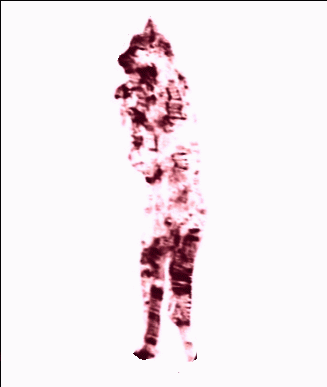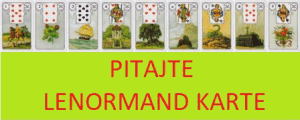Time, Magic and the Self (I/III)
T
here is.Isn’t it? Would you agree? Well, I would not. In other words, to say ‘There is.’ is infinitesimally close to a misunderstanding. Or a neglect, if you prefer. It is not the missing of a referent, though, at least not in first instance. The problem would be almost the same if we would have said ‘There is x’. It is the temporal aspect that is missing. Without considering the various aspects of temporality of the things that build up our world, we could neither understand the things nor the world.
Nowadays, the probability for finding some agreement for such a claim is somewhat higher than it once was, in the high tides of modernism. For most urbanists and architects, time was nothing but a somewhat cumbrous parameter, yet nothing of any deeper structural significance. The modern city was a city without time, after breaking the traditions, even not creating new ones. Such was the claim, which is properly demonstrated by Simon Sadler [1] citing Ron Herron, group member of Archigram.
“Living City”1 curator Ron Herron described his appreciation of “Parallel of Life and Art”: It was most extraordinary because it was primarily photographic and with apparently no sequence; it jumped around like anything.
Unfortunately, and beyond the mere “functioning,” the well-organized disorg-anization itself became a tradition. Koolhaas called it Junkspace [2]. Astonishingly, and not quite compatible to the admiration of dust-like scatterings that negate relationality, Archigram claims to be interested in, if not focused to life and behavior. Sadler summarizes (p.55)
“Living City” and its catalogue were not about traditional architectural form, but its opposite: the formlessness of space, behavior, life.
Obviously, Sadler himself is not quite aware about the fact that behavior is predominantly a choreography, that is, it is about form and time as well as form in time. The concepts of form and behavior as implied by Archigram’s utopias are indeed very strange.
Basically, the neglect of time beyond historicity is typical for modern/modernist architects, urbanists and theorists up to our days, including Venturi [2], Tschumi [4] or Oswald [5]. Even Koolhaas does not refer expressis verbis to it, albeit he is constantly in a close orbit of it. This is astonishing since key concepts in the immediate neighborhood of time such as semiotics, narration or complexity are indeed mentioned by these authors. Yet, without a proper image of time one remains on the level of mere phenomena. We will discuss this topic of time on the one side and architects and architecture on the other later in more detail.
Authors like Sigfried Giedion [6] or Aldo Rossi [7] didn’t change much concerning the awareness for time in the practice of architecture and urbanism. Maybe, partly because their positions have been more self-contradictive than consistent. On the one hand they demanded for a serious consideration of time, on the other hand they still stuck to rather strong rationalism. Rationalist time, however, is much less than just half of the story. Another salient reason is certainly given by the fact that time is a subject that is notoriously difficult to deal with. As Mike Sandbothe cites Paul Ricoeur [8]:
Ultimately, for Ricoeur time marks the „mystery“ of our thinking, which resists representation by encompassing our Dasein in a way that is ineluctable for our thinking.2
This Essay
One of the large hypotheses that I have been following across the last essays is that we will not be able to understand the Urban3 and architecture without a proper image of differentiation. Both parts of this notion, the “image” and the “differentiation” need some explication.
Despite “differentiation” seems to be similar to change, they are quite different from each other. The main reason being that differentiation comprises an activity, which, according to Aristotle has serious consequences. Mary Louise Gill [9] summarizes his distinction as follows:
Whereas a change is brought about by something other than the object or by the object itself considered as other (as when a doctor cures himself), an activity is brought about by the object itself considered as itself. This single modification yields an important difference: whereas a change leads to a state other than the one an object was previously in, an activity maintains or develops what an object already is.4
In other terms, in case of change it is proposed that it is relatively unconstrained, hence with less memory and historicity implied, while activity, or active differentiation implies a greater weight of historicity, less contingency, increased persistence and thus an increased intensity of being in time.
Besides this fundamental distinction we may discern several modes of differentiation. The question then is, how to construct a proper “whole” of that. Obviously we can think of different such compound “wholes,” which is the reason for our claim that we need a proper image of differentiation.
Now to the other part of the notion of the “image of differentiation,” the image. An “image” is much more than a “concept.” It is more like a diagram about the possibility to apply the concept, the structure of its use. The aspect of usage is, of course, a crucial one. Actually, with respect to the relation between concepts and actions we identified the so-called “binding problem”. The binding problem claims that there is no direct, unmediated way from concepts to actions, or the reverse. Models are needed, both formalizable structural models, being more close to concepts, and anticipatory models, being more close to the implementation of concepts. The operationalization of concepts may be difficult. Yet, action without heading to get contact to concepts is simply meaningless. (The reason for the emptiness of ‘single case’-studies.) Our overall conclusion regarding the binding problem was that it is the main source for frictions and even failure in the control and management of society, if it is not properly handled, if concepts and actions are not mediated by a layer of “Generic Differentiation.” Only the layer of “Generic Differentiation” with its possibility for different kinds of models can provide the basic conditions to speak about and to conceive any of the mechanisms potentially relevant for the context at hand. Such, the binding problem is probably one of the most frequent causes for many, many difficulties concerning the understanding, designing and dealing with the Urban, or its instances, the concrete city, the concrete settlement or building, the concrete neighborhood.
This transition between concept and action (or vice versa) can’t be fully comprised by language alone. For a certain reasons we need a diagram. “Generic Differentiation”, comprising various species of probabilistic, generalized networks, is conceived as part of a larger compound—we may call it “critical pragmatics”—, as it mediates between concepts and actions. Finally we ended up with the following diagram.
Figure 1: “Critical Pragmatics for active Subjects.” The position of Generic Differentiation is conceived as a necessary layer between the domains of concepts and actions, respectively. See text below for details and the situs where we developed it.
Note, that this diagram just shows the basic module of a more complete diagram, which in the end would form a moebioid fractal due to self-affine mapping: this module appears in any of the three layers in a nested fashion. Hence, a more complete image would show this module as part of a fractal image, which however could not be conceived as a flat fractal, such like a leaf of fern.5 The image of pragmatics as it is shown above is first a fractal due to the self-affine mapping. Second, however, the instances of the module within the compound are not independent, as in case of the fern. Important traces of the same concepts appear at various levels of the fractal mapping, leading to dimensional braids, in other words to a moebioid.
So, as we are now enabled for approaching it, let us return to the necessity of considering the various aspects of temporality. What are they in general, and what in case of architecture, the city, the Urban, or Urban Reason? Giedion, for instance, related to time with regard to the historicity and with regard to an adaptation of the concept of space-time from physics, which at that time was abundantly discussed in science and society. This adaptation, according to Giedion, can be found in simultaneity and movement. A pretty clear statement, one might think. Yet, as we will see, he conceived of these two temporal forms of simultaneity and movement in a quite unusual way that is not really aligned to the meaning that it bears in physics.
Rossi, focusing more on urban aspects, denotes quite divergent concepts of time. He did not however clearly distinguish or label them. He as well refers to history, but he also says that a city has “many times” (p.61 in [7]), a formulation that reminds to Bergson’s durée. Given the cultural “sediments” of a city within itself, its multiply folded traces of historical times, such a proposal is easy to understand, everybody could agree upon it.
Besides the multiplicity of referential historical time—we will make the meaning of this more clear below—, Rossi also proposes implicitly a locality of time through the acceleration of urbanization through primary elements such as “monuments”, or building that own a “monumental” flavor. Unfortunately, he neither does refer to an operationalization of his time concept nor does he provide his own. In other words, he still refers to time only implicitly, by describing the respective changes and differentiations on an observational level.
These author’s proposals provide important hints, no doubt. Yet, we certainly have to clarify them from the perspective of time itself. This equals firstly an inversion of the perspective from architectural or urbanismic vantage point taken by Giedion and Rossi, who in both cases started from built matter. Before turning to architecture, we have to be clear about time. As a second consequence, we have to be cautious when talking about time. We have to uncover and disclose the well-hidden snares before we are going to push the investigation of the relation between temporality and architecture further down.
For instance, both Giedion and Rossi delivered an analysis. This analyticity results in a pair of consequences. Either it is, firstly, just useful for sorting out the past, but not for deriving schemes for synthesis and production, or, secondly, it requires an instantiation that would allow to utilize the abstract content of their analysis for taking action. Such an instantiation could produce hints for a design process that is directed to the future. Yet, neither Giedion [6] nor Rossi [7] did provide such schemes. Most likely precisely due to the fact that they did not refer to a proper image of time!
This essay is the first of two in a row about the “Time of Architecture”. As Yeonkyung Lee and Sungwoo Kim [10] put it, there is much need for its investigation. In order to do so, however, one has to be clear about time and its conception(s). Insofar we will attempt to trace time as a property of architecture and less as an accessory, we also have to try to liberate time from its distinctive link to human consciousness without sacrificing the applicability of the respective conception to the realm of the human.
Hence, the layout of this essay is straightforward.
(a) First we will introduce a synopsis on various conceptions of time as brief as possible, taking into account a few, and probably the most salient sources. This will equip us with possible distinctions about modes or aspects of time as well as the differences between and interdependencies of time and space.
In architecture and urbanism, almost no reference can be found to philosophical discourses about time. Things are handled intuitively, leading to interesting but not quite valuable and usable approaches. We will see that the topic of “time” raises some quite fundamental issues, reaching at least into the field of hermeneutics, semiotics, narratology, and of course philosophy as well. The result will be a more or less ranked list of images of time as it is possible from a philosophical vantage point.
(b) Before the background of this explication and the awareness for all the possible misunderstandings around the issue of time, we will introduce a radically different perspective. We will ask how nature “creates time”. More precisely, we will ask about the abstract elements and mechanisms that are suitable for “creating time.” As weird this may seem at first, I think it is even a necessary question. And for sure nobody else posed this question ever before (outside of esoterics, perhaps, nut we do not engage in esoterics here!).
The particularity of that approach is that the proposed structure would work as a basis for deriving an operationalization for the interpretation of material systems as well as an abstract structure for a foundation of philosophical arguments about time. Of course, we have to be very careful here in order to avoid falling back into naturalist or phenomenological naiveties. Yet, carefulness will allow us to blend the several perspectives onto time into a single one, without—and that’s pretty significant—reducing time to either space or formal exercises like geometry. Such, the reward will be a completely new image of time, one that is much more general than any other and which overcomes the traditional separations, for instance that which pulls apart physical time and time of experience. Another effect will be that the question about the origin of time will vanish, a question which is continuously being discussed in cosmology (and theology, perhaps, as well).
(c) From the new perspective then we will revisit architecture and the Urban (in the next essay). We will not only return to Giedion, Rossi, or Koolhaas but we also will revisit the “Behavioral Turn” that we have been introducing some essays ago.
Displayed in condensed form, our program comprises the following three sections:
(a) Time itself as a subject of philosophy.
(b) The creation of time.
(c) Time of Architecture.
Before we start a few small remark shall be in order. First, it may well appear as somewhat presumptuous to try to handle time in sufficient depth within just one or two sections of a single essay. I am fully aware about this. Yet, the pressure to condense the subject matter also helps to focus, to achieve a structural picture on the large scale. Second, it should be nevertheless clear that we can’t provide a comprehensive overview or summary about the various conceptions of time in philosophy and science, as interesting this would have been. It would exceed even the possibilities of a sumptuous book. Instead, I will lay out my arguments by means of a purposeful selection, enriched with some annotations.
On the other hand this will provide one of the very rare comprehensive inquiries about time, and the first one that synthesizes a perspective that is backward compatible to those authors to whom it should.
Somewhat surprising, this could even include (theoretical) physics. Yet, the issue is quite complex and very different from mainstream, versions of which you may find in [27, 28]. Even as there are highly interesting and quite direct links to philosophy, I decided to put this into a separate essay, which hopefully will happen soon. Just to give you a tiny glimpse on it: Once Richard Feynman called his mentor and adviser John Wheeler in the middle of the night, asking him, “How many electrons are there in the universe?” According to the transmission Wheeler answered: “There is exactly one.” Sounds odd, doesn’t it? Nevertheless it may be that there are indeed only a few of them, according to Robbert Dijkgraaf, who also proposes that space-time is an emergent “property,” while information could be conceived as more fundamental than those. This, however, has a rather direct counterpart in the metaphysics of Spinoza, who claimed that there is only 1 single attribute. Or (that’s not an unhumbleness), take our conception of information that we described earlier. Anyway, you may have got the point.
The sections in the remainder of this essay are the following. Note that in this piece we will provide only chapter 1 and 2. The other chapters from “Synthesis” onwards will follow as a separate piece.
1. Time in Philosophy—A Selection
Aristotle
Pseudo-Paradoxes
Heidegger
Bergson
Peirce
Ricoeur
Wittgenstein
Kant
2. Synopsis
The following sections will be included in the next essay
3. Synthesis of Time
3.1. Complexity, recapitulated
3.2. The paradigmatic Heart
3.3. Consolidation
4. The Self as an Issue of Temporality
5. Time of Architecture
1. Time in Philosophy—A Selection
Since antiquity people have been distinguishing two aspects of time. It was only in the course of the success of modern physics and engineering that this distinction has been gone forgotten in the Western world’s common sense. The belief set of modernism with its main pillar of metaphysical independence may have been contributing as well. Anyway, the ancient Greeks assigned them the two gods of chronos and kairos. While the former was referring to measurable clock-time, the second denoted the opportune time. The opportune time is a certain period of time that is preferential to accomplish an action, argument, or proof, which includes all parts and parties of the setting. The kairos clearly exceeds experience and points to the entirety of consummation. The advantage of taking into account means and ends is accompanied by the disadvantage of a significant inseparability.
Aristotle
Aristotle, of course, developed an image of time that is much richer, more detailed and much less mystical. For him, change and motion are apriori to time [11]. Aristotle is careful in conceiving change and motion without reference to time, which then gets determined as “a number of change with respect to the before and after” (Physics 219 b 1-2). Hence, it is possible for him to conceive of time as essentially countable, whereas change is not. Here, it is also important to understand Aristotle’s general approach of hylemorphism, which states that—in a quite abstract sense—substance always consists of a matter-aspect and a form-aspect [11]. So also for time. For him, the matter-aspect is given by its kinetic, which includes change, while the form aspect shows up in a kind of order6. Time is a kind of order is not, as is commonly supposed, a kind of measure, as Ursula Coope argues [13]. Aristotle’s use of “number” (arithmos) is more a potential for extending operations, as opposed to “measure” (metron), which is imposed to the measured. Hence, “order” does not mean that this order is necessarily monotone. It is an universal order within which all changes are related to each other. Of course, we could reconstruct a monotone order from that, but as said, it is not a necessity. Another of the remarkable consequences of Aristotle’s conception is that without an counting instance—call it observer or interpretant —there is no time.
This role of the interpreter is further explicated by Aristotle with respect to the form of the “now”. Roark summarizes that we have understand that
[…] phantasia (“imagination”) plays a crucial role in perception, as Aristotle understands it, and therefore also in his account of time. Briefly, phantasia serves as the basis for both memory and anticipation, thereby making possible the possession of mental states about the past and the future. (p.7)
Actually, the most remarkable property of Aristotle’s conception is that he is able to overcome the duality between experience and physical time by means of the interpretant.
Pseudo-Paradoxes
It is not by chance alone that Augustine denied the Aristotelian conception by raising his infamous paradox about time. He does so from within Christian cosmogony. First he argues that the present time vanishes, if we try to take close look. Then he claims that both past and future are only available in the present. The result is that time is illusory. Many centuries later, Einstein would pose the same claim. Augustine transposed the problem of time into one of the relation between the soul and God. For him, no other “solution” would have been reasonable. Augustine instrumentalises a misunderstanding of references, established by mixing incompatible concepts (or language games). Unfortunately, Augustine inaugurated a whole tradition of nonsense, finally made persistent by McTaggart’s purported proof of the illusion of time [14] where he extended Augustine’s already malformed argument into deep nonsense, creating on the way the distinction between A-series (past, present and future) and B-series (earlier, later) of time. It is perpetuated until our days by author’s like Oaklander [15][16] or Power [17]. Actually, the position is so nonsensical and misplaced—Bergson called it a wrong problem, Wittgenstein a grammatical mistake—that we will not deal with it further7.
Heidegger
Heidegger explicitly refers to phenomenology as it has been shaped by Edmund Husserl. Yet, Heidegger recognized that phenomenology—as well as the implied ontology of Being—suffers from serious defects. Thus, we have to take a brief look onto it.
With the rise of phenomenology towards the end of the 19th century, the dualistic mapping of the notion of time has been reintroduced and reworked. Usually, a distinction has been made between clock-time on the one hand and experiential time on the other. This may be regarded indeed as quite similar to the ancient position. Yet, philosophically it is not interesting to state such. Instead we have to ask about the relation between the two. The same applies to the distinction of time and space.
There are two main positions dealing with this dualism. On the one side we find Bergson, on the other Brentano and Husserl as founders of phenomenology. Both refer to consciousness as an essential element of time. Of course, we should not forget that this is one of the limitations we have to overcome, if we want to achieve a generalized image of time.
Phenomenology suffers from a serious defect, which is given by the assumption of subjects and objects as apriori entities. The object is implied as a consequence of the consciousness of the subject, yet this did not result in a constructivism à la Maturana. Phenomenology, as an offspring of 19th century modernism and a close relative of logicism, continued and radicalized the tendency of German Idealism to think that the world could be accessed “directly”. In the words of Thomas Sheehan [19]:
And finally phenomenology argued that the being of entities is known not by some after-the-fact reflection or transcendental construction but directly and immediately by way of a categorical intuition.
There are two important consequences of that. Firstly, it violates the primacy of interpretation8 and has to assume a world-as-such, which in other words translates into a fundamentally static world. Secondly, there is no relation between to appearances of an object across time.
Heidegger, in “Being and Time” [21] (original “Sein und Zeit” [22]), tried to correct this defect of phenomenology and ontology by a hermeneutic transformation of phenomenology. This would remove the central role of consciousness, which is replaced by the concept of the “Being-there” (Dasein) and so by the “Analysis of Subduity.” He clearly states (end of §3 in “Being and time”) that any ontology has to be fundamental ontology. The Being-there (Dasein) however needs— in order to be able to see its Being—temporality.
The fundamental ontological task of the interpretation of being as such, therefore, includes working out the Temporality of being. The concrete answer to the question of the sense of being is given for the first time in the exposition of the problematic of Temporality. ([22], p.19)
How is temporality described? In §65 Heidegger writes:
Coming back to itself futurally, resoluteness brings itself into the Situation by making present. The character of “having been” arises from the future, and in such a way that the future which “has been” (or better, which “is in the process of having been”) releases from itself the Present. This phenomenon has the unity of a future which makes present in the process of having been; we designate it as “temporality”.9
Time clearly “delimits” Being as a conditioning horizon:
[…] we require an originary explication of time as the horizon of the understanding of being in terms of temporality as the being of Dasein who understands being. ([22], p.17)
Heidegger examines thoroughly the embedding of Being-there into time and the conditioning role of “time.” For instance, we can understand a tool only with respect to its future use. Temporality itself is seen as the structure of “care”, a major constitutive of the being of Dasein, which similarly to anticipation carries a strong reference to the future:
The originary unity of the structure of care lies in temporality” ([22], p.327).
Temporality is the meaning and the foundation of Being.10 Temporality is an Existential. Existential analysis claims that Being-there does not fill space, it is not within spatiality (towards the end of §70):
Only on the basis of its ecstatico-horizontal temporality is it possible for Dasein to break into space. The world is not present-at-hand in space; yet, only within a world does space let itself be discovered. The ecstatical temporality of the spatiality that is characteristic of Dasein, makes it intelligible that space is independent of time; but on the other hand, this same temporality also makes intelligible Dasein’s ‘dependence’ on space—a ‘dependence’ which manifests itself in the well-known phenomenon that both Dasein’s interpretation of itself and the whole stock of significations which belong to language in general are dominated through and through by ‘spatial representations’. This priority of the spatial in the Articulation of concepts and significations has its basis not in some specific power which space possesses, but in Dasein’s kind of Being. Temporality is essentially deterioriating11, and it loses itself in making present; […]
This concept of temporality could have been used to overcome the difference between “vulgar time” (chronos) and experiential time, to which he clearly sub-ordinated the former. Well, “could have been” if Heidegger’s program would have been completable. But Heidegger finally failed, “Being and Time” remained fragmentary. There are several closely related aspects for this failure. Ultimately, perhaps, as Cristina Lafont [24] argues, it is impossible to engage in a radical program of detranscendentalization and at the same time to try to achieve a fundamental foundation. This pairs with the inherited phenomenological habit to disregard the primacy of interpretation. The problem for Heidegger now is that the sign in the language is already in the world which has to be subdued. As Lafont brilliantly revealed, Heidegger still adheres to the concept of language as an “ontic” instrument, as something that is found in the outer world. Yet, this must count simply as a highly inappropriate reduction. Language constantly and refracted points towards the inwardly settled translation between body and thought and the outward directed translation between thought and community (of speakers), while translation is also kind of a rooting. Such we can conclude that ultimately Heidegger therefore still follows the phenomenological subject-object scheme. His attempt for a fundamental foundation while avoiding any reference to transcendent horizons must fail, even if this orientation towards the fundamental pretends to just serve as an indirect “foundation” (see below).
There is a striking similarity between Augustine and Heidegger. We could call it metaphysical linearity as a cosmological element. In case of Augustine it is induced by the believe in Salvation, in case of Heidegger by the believe into an absolute beginning paired with a (implicit) believe to step out of language. In a lecture held in 1963, that is 36 years after Being and Time, titled “Time and Being”, Heidegger revisits the issue of time. Yet, he simply capitulated from the problem of foundations, referring to “intuitional insight” as a foundation. In the speech “Time and Being” hold in 1962 [25], he said
To think the Being in its own right requires to dismiss Being as the originating reason of being-Being (des Seienden), in favor of the Giving that is coveredly playing in its Decovering (Entbergen), i.e. of the “There is as giving fateness.”12 (p.10)13
Here, Heidegger refutes foundational ontology in favour of the communal and external world by he concept of the Giving14. Yet, the step towards the communal still remains a very small step, since now not only the Other gets depersonalized as far as possible. The real serious issue here is that Heidegger now replaces the ontological conception of “ontic” language by the “ontic” communal. He still does not understand the double-articulation of the communal through language. We may say that Heidegger is struck by blindness (on his right eye).
Inga Römer [47] detects a certain kind of archaism throughout the philosophy of Heidegger, which comes along as a still not defeated thinking about origins.
Finally, in „Being and Time“ Heidegger detects the origin of time in the event, which he dedicatedly determines as the provider [m: the Giving] of Being and time. This Giving is seen as being divested from itself. The event, determined by Heidegger elsewhere as a singular tantum, is eliminated from itself—and nevertheless the event is conceived as the origin of time.15 (p.289)
Many years after the publication of “Being and Time”, in the context of the seminar “Time and Being” Heidegger claimed that he did not conceive fundamental ontology as kind of a foundation. He described the role of the Daseins-analytics as proposed in “Being and Time” in the following way [23]:
Being and Time is in fact on the way to find, taking the route through the timeness of Dasein in the interpretation of Being as temporality, a conception of time, that Owned of “time”, whence “Being” reveals itself as Presenting. Such however it is said that the fundamental mentioned in the fundamental ontology can’t take reference and synthesis. Instead, the whole analytics of Dasein ought to be repeated, subsequent of possibly having thrown light upon the sense of Being, in a more pristinely and completely different manner.16
Indeed, “Being and Time” remained fragmentary, Heidegger recognized the inherent incompatibility of the still transcendental alignment with the conception of the Dasein and was hence forced to shift the target of the Daseins-analytics [26](p.99). Being is not addressed from the vantage point of being-Being (Seiendes) anymore. It resulted in a replacement of the sense of Being by the question about the historical truth of Being as fateness. In the course of that shift, however, temporality lost its role, too, and was replaced by a thinking of a historized event. This event is conceived as kind of a non-spatial endurance [25]:
Time-Space (m: endurance) now denotes the open that in the mutually-serving-one-another of arrival, having been (Gewesenheit) and present clears itself. Only this open spacingly allows (räumt ein) the ordinarily known space its propagation. (p.19)17
As far as this move could be taken as a cure of the methodological problems in “Being and Time,” it turned out, however, to be far detrimental for Heidegger’s whole philosophy. He was forced to determine man by his ecstatic exposition and being-thrown (tossed?) into nothingness. Care as kind of cautious anticipation was replaced first by angst, then by incurable disgust through Sartre. While the early Heidegger precisely tried to cure the missing of primal relationality in phenomenology, the later Heidegger got trapped by an even more aggressive form of singularization and denial of relationality at all. This whole enterprise of existential philosophy suffers from this same deep disrespect if not abhorrence of the communal, of the practice of sharing joyfully a common language that turns into the Archimedic Point of being human. Well, how could he think differently given his particular political aberrancy?
Anyway, Heidegger’s shift to endurance brings us directly to the next candidate.
Bergson
Politically, in real life, Heidegger and Bergson could not be more different. The former more than sympathizing (up to open admiration) with totalitarianism in the form of Hitlerism and fascism, thereby matching his performative rejection of relationality, the latter engaging internationally in forming the precursor of the UN.
But, how does Bergson’s approach to time look like? For Bergson, logicism and the subject-object dichotomy are thoughts that are alien to him. Both actually have to assume a sequential order that yet have to be demonstrated in its genesis.18 The starting point for Bergson is the diagnosis that measurable time, or likewise measuring time, as it is done in physics as well by any clock-time introduces homogeneity, which in turn translates into quantificability [31]. As such, time is converted into a spatial concept, as these properties are also properties of space as physics conceives it. The consequence is that we create pseudo-paradoxes like that which has been explicated by Augustine. To this factum of quantificability Bergson then opposes qualitability. For him, quality and quantity remain incommensurable throughout his works.
At any rate, we cannot finally admit two forms of the homogeneous, Time and Space, without first seeking whether one of them cannot be reduced to the other […] Time, conceived under the form of an unbounded and homogeneous medium, is nothing but the ghost of space, haunting the reflective consciousness. ([32] p. 232)
So we can fix that time is essential a qualitative entity, or in other words, an intensity that is, according to Bergson, opposed to the extensity of spatial entities. Spatial entities are always external to each other, while for intensive entities—such as time—such an externalization is not possible. They can be thought only as a mutually interpenetrating beside-one-another, which however should be thought as an aterritorial “beside”. As Friedrich Kuemmel puts it, intensity, for Bergson, can be detached from extensity.19 Intensity then is being equipped by Bergson with a manifoldness or multiplicity that consequently establishes a reality apart from physical spatiality with its measurable time. This reality is the reality of consciousness and the soul. Bergson calls it “durée”, which of course must not be translated into “duration” (or into the German “Dauer”). Durée is more like the potential for communicable time, or in Deleuze’s words, a “potential number” ([33] p.45), to which we can refer in language literally as “referential time.”
Bergson’s notion of durée is quite easily determined (p.37)
It [durée] is a case of “transition,” of a “change,” a becoming, but it is a becoming that endures, a change that is substance itself. [...] Bergson has no difficulty in reconciling the two fundamental characteristics of duration; continuity and heterogeneity. However, defined in this way, duration is not merely lived experience; [...] it is already a condition of experience.
As a qualitative multiplicity, durée is opposed to quantitative multiplicity. For Bergson, this duality is a strict and unresolvable one, yet it does not set up an opposition, it is not subject of dialectic. It does, however, follow the leitmotif of Bergson, according to Deleuze ([33] p.23): People see quantitative differences where actually are differences in kind. (RRR)
Deleuze emphasizes that the two multiplicities have to be strictly distinguished ([33] p.38).
[...] the decomposition of the composite reveals to us two types of multiplicity. One is represented by space [...]: it is a multiplicity of exteriority, of simultaneity, of juxtaposition, of order, of quantitative differentiation, of difference in degree; it is a numerical multiplicity, discontinuous and actual. The other type of multiplicity appears in pure duration: It is an internal multiplicity of succession, of fusion, of organization, of heterogeneity, of qualitative discrimination, or of difference in kind; it is a virtual and continuous multiplicity that cannot be reduced to numbers.
Here we may recall Aristotle’s notion of time as kind of order. This poses the question whether duration itself is a multiplicity. As Deleuze carves it out ([33] p.85):
At the heart of the question “Is duration one or multiple?” we find a completely different problem: Duration is a multiplicity, but of what type? Only the hypothesis of a single Time can, according to Bergson, account for the nature of virtual multiplicities. By confusing the two types – actual spatial multiplicity and virtual temporal multiplicity- Einstein has merely invented a new way of spatializing time.
Pushing Bergson’s architecture of time further, Deleuze develops his first accounts on virtuality. It becomes clear, that durée is a virtual entity. As such, it is outside of the realm of numbers, even outside of quantificability or quantitability. Speaking in Aristotelian terms we could say that time is a smooth manifold of kinds of orders. Again Deleuze (p.85):
Being, or Time, is a multiplicity. But it is precisely not “multiple”; it is One, in conformity with its type of multiplicity.
For Bergson, tenses are already actualizations of durée. The past is conceived as being different from the present in kind, and could not be compared to it. There is also possibility for a transition from a “past” to a “present.” It is the work of memory (as an abstract entity) that creates the link. Memory extends completely into present, though. Its main effect is to recollect the past. In this sense, memory is stepping forward. Durée and memory are co-extensive.
As we have seen, Bergson’s conception of time is strongly linked to consciousness and its particular memory. We also have seen that he considers physical time as a kind of a secondary phenomenon. He thinks that things surely have no endurance in the sense of a capability to actualize durée into an extended present.
This poses a problem: What is time in our outside? In Time and Free Will he writes [32],
Although things do not endure as we do ourselves, nevertheless, there must be some incomprehensible reason why phenomena are seen to succeed one another instead of being set out all at once. (p.227)
Well, what does this claim “things do not endure as we do ourselves” refer to? Is there endurance of things at all? And what about animals, thinking animals, or epistemic machines? As Deleuze explains, Bergson is able to solve this puzzle only by extending his durée into a cosmic principle ([33], pp.51). Yet, I think that in this case he mixes immaterial and material aspects in a quite inappropriate manner.
Bergson’s conception of time certainly has some appealing properties. But just as its much less potent rival phenomenology it is strongly anthropocentric. It can’t be generalized enough for our purposes that follow the question of time in architecture. Of course, we could conceive of architecture as a thing that is completely passive if nobody looks onto it or thinks about it. But what is then about cities? The perspective of passive things has been largely refuted, first by Heidegger through his hermeneutic perspective, and in a much more developed manner, by Bruno Latour and his Agent-Network-Theory.
In still other terms, we could say that Bergson’s philosophy suffers from a certain binding problem. I think it was precisely the binding problem that caused the hefty dispute between Einstein and Bergson. Just to be clear, in my opinion both of them failed.
Thus we need a perspective that allows to overcome the binding problem without sacrificing either the experiential time, or durée or the measurability of referential time. This perspective is provided by the semiotics of Charles Sanders Peirce.
Peirce
Peirce was an engineer, his formal accounts thus always pragmatic. This sets him apart from Bergson and his early devotion to mathematics. Where the former sees processes in which various parts engage, the latter sees abstract structures.
Being an engineer, Peirce looked at thought and time in a completely different manner. He starts with referential time, with clock-time. He does not criticize it at first hand as Bergson would later do.
The first step in our reconstruction of Peircean time is his move to show that neither thought nor, of course, consciousness can take place in an instant. Consciousness must be a process. Else, thought is a sign. One has to know that for Peirce, a sign is not to be mistaken as a symbol. For him it is an enduring situation. We will return to this point later.
In MS23720 (chapter IV in Writings 3) his primary concern is to explain how thinking could take place
A succession in time among ideas is thus presupposed in time-conception of a logical mind; but need this time progress by a continuous flow rather than by discrete steps?
Of course, he concludes that a “continuous time” is needed. Yet, at this point, Peirce starts to depart from a single, univoke time. He continues
Not only does it take time for an idea to grow but after that process is completed the idea cannot exist in an instant. During the time of its existence it will not be always the same but will undergo changes. […] It thus appears that as all ideas occupy time so all ideas are more or less general and indeterminate, the wider conceptions occupying longer intervals.
This way he arrives at a time conception that could be characterized as a multiplicity of continua. Even if it would be possible to determine a starting time and a time of completion for any of those intervals, it still remains that all those overlapping thoughts form a single consciousness.
Chapter 5 in “Writings 3” (MS239), titled “That the significance of thought lies in reference to the future” [35], starts in the following way.
In every logical mind there must be 1st, ideas; 2nd, general rules according to which one idea determines another, or habits of mind which connect ideas; and, 3rd, processes whereby such habitual connections are established.
The second aspect strongly reminds to our orthoregulation and the underlying “paradox of rule-following” first clearly stated by Ludwig Wittgenstein in the 1930ies [36]. The section ends with the following reasoning:
It appears then that the intellectual significance of all thought ultimately lies in its effect upon our actions. Now in what does the intellectual character of conduct consist? Clearly in its harmony to the eye of reason; that is in the fact that the mind in contemplating it shall find a harmony of purposes in it. In other words it must be capable of rational interpretation to a future thought. Thus thought is rational only so far as it recommends itself to a possible future thought. Or in other words the rationality of thought lies in its reference to a possible future.
In this brief paragraph we may find several resemblances to what we have said earlier, and elsewhere. First, Peirce’s conception of time within his semiotics provide us a means for referring to the binding problem. More precisely, thought as sign process is itself the mechanism to relate ideas and actions, where actions are always preceded, but never succeeded by their respective ideas.
Second, Peirce rejects the idea that a single purpose could be considered as reasonable. Instead, in order to justify reasonability, a whole population of remindable purposes, present and past, is required; all of them overlapping, at least potentially, all of them once pointing to the future. This multiplicity of overlapping and unmeasurable intervals creates a multiplicity of continuations. Even more important, this continuation is known before it happens. Hence, the present extends into the past as well as into the future. Given the fact that firstly the immediate effect of an action is rarely the same as the ultimate effect, and secondly the ultimate effect is often quite different to the expectation related to the purpose, we often do even not know “what” happened in the past. So, by applying ordinary referential time, our ignorance stretches to both sides of present, though not in the same way. It even exceeds the period of time of what could be called event.
Yet, by applying Peirce’s continuity, we find a possibility to simplify the description. For we then are faced by a single kind of ignorance that results in the attitude that Heidegger called “care” (Sorge).
The mentioned extension of the experienced ignorance as an ignorance within the present into the past and the future does not mean, of course, to propose a symmetry between the past and the future with respect to present, as we will see in a moment. Wittgenstein [40] is completely right in his diagnosis that
[…] in the grammar of future tense the conception of “memory” does not occur, even not with inverted sign.21 (p. 159)
The third issue, finally, concerns the way re relates rationality to the notion of “possible future.” This rationality is not claiming absolute objectivity, since it creates its own conditions as well as itself. Peirce’s rationality is a local one, at least at first sight. It is just this creating of the possible future that provides the conditions for the possibility of the experiencibility of future affairs.
The most important (methodological) feature of Peircean semiotics is, however, the possibility to jump out of consciousness, so to speak. Sign situations occur not only within the mind, they are also ubiquitous in interpersonal exchange, and even in the absorption of energy by different kinds of matter. Semiotics provides a cross-medial continuity. This argument has been extended later by John Dewey [37][38], Peirce’s pragmatist disciple .
Such we could say that, if (1) thought comprises signs, and (2) signs are sign situations, then it does not make sense to speak about “instantaneous” time regarding thought and consciousness in particular, but also regarding any interpretation in general, as interpretation is always part of a sign (-situation). Then, we also can say that presence lasts as long as a particular interpretation is “running”. Yet, signs refer to signs only. Interpretations are fundamentally open in its beginning as well as in its end. They are nested and occur in parallel, and are more broken than finished just contingently. Once the time string, or the interpretive chain, respectively, has been broken, past and future appear literally in their own right, i.e. de iure, and only by a formal act.22
The consequence of all that the probabilistic network of interpretations gives rise to a cloud of time strings, any of them with indeterminable ends. It is clear that signs and thus thinking would be absolutely impossible if there would be just one referential clock-time. But even more important, without the inner multiplicity of “sign time” there would be only the cold world of a single strictly causal process. There would be no life and no information. Only a single, frozen black hole.
Given the primacy of the cloud of time strings, it is easy to construct referential time as a clock-time. One just needs to enumerate the overlapping time strings in such a way that enumeration and counting coincide. Once this is done it is possible to refer to a clock. Yet, the clock would be without any meaning without such a enumerative counting. The clock the is suitably actualized in a more simple way by a perfectly repetitive process, that is, a process that actually is outside of time, much as Aristotle thought it is the case for celestial bodies. And once we have established clock time we can engage in interpersonal synchronization of our individual time string populations.






















































 bglavac
bglavac edin.kecanovic
edin.kecanovic irida
irida




















































